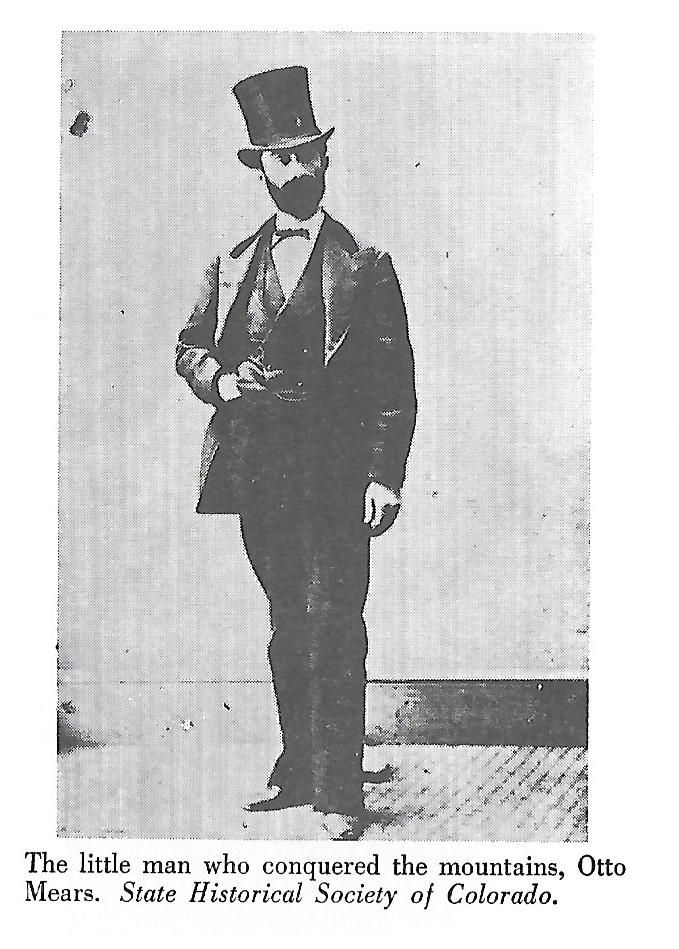Otto Mears was orphaned in Russia at a young age. He came to America to live with family, but more or less fended for himself from age ten on.
Having volunteered for the army during the Civil War he was discharged near Las Cruces, New Mexico. He soon settled in Saguache, Colorado where he became a wheat farmer.
Unable to get his wheat to the booming markets around the mining town of Leadville, because of the difficulty of transportation, he began to improve the roads himself when he realized a better route to wealth.
He sought, and was granted permission, to charge tolls for others to use his road, and thus began a career that opened and connected mining and farming towns all over southwest Colorado.
Altogether Mears created over two hundred miles of toll roads for wagons and stagecoaches, and then laid many more miles of railroad tracks. His interests also included the ownership of mines, mills, telegraph lines, stores and hotels.
He has been honored as one of Colorado's pioneers with a stained glass likeness in the rotunda of Colorado's State Capitol Building.
He eventually retired to Pasadena, California where he died at age 91. Per his request he was cremated and his ashes were spread over Engineer Mountain, near Ouray, Colorado. A monument to him stands along Route 550 "The Million Dollar Highway" Between Ouray and Silverton, Colorado.
Otto Mears was orphaned in Russia at a young age. He came to America to live with family, but more or less fended for himself from age ten on.
Having volunteered for the army during the Civil War he was discharged near Las Cruces, New Mexico. He soon settled in Saguache, Colorado where he became a wheat farmer.
Unable to get his wheat to the booming markets around the mining town of Leadville, because of the difficulty of transportation, he began to improve the roads himself when he realized a better route to wealth.
He sought, and was granted permission, to charge tolls for others to use his road, and thus began a career that opened and connected mining and farming towns all over southwest Colorado.
Altogether Mears created over two hundred miles of toll roads for wagons and stagecoaches, and then laid many more miles of railroad tracks. His interests also included the ownership of mines, mills, telegraph lines, stores and hotels.
He has been honored as one of Colorado's pioneers with a stained glass likeness in the rotunda of Colorado's State Capitol Building.
He eventually retired to Pasadena, California where he died at age 91. Per his request he was cremated and his ashes were spread over Engineer Mountain, near Ouray, Colorado. A monument to him stands along Route 550 "The Million Dollar Highway" Between Ouray and Silverton, Colorado.
Family Members
Sponsored by Ancestry
Advertisement
Explore more
Sponsored by Ancestry
Advertisement














